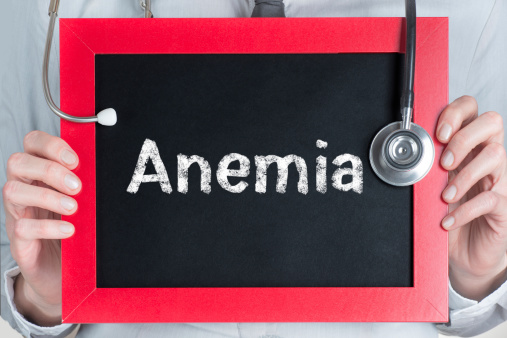 Iron deficiency is an important health issue because not only is it a common health problem, especially in females, but it accounts for the most common forms of anemia. Although iron deficiency is considered a nutritional deficiency, the causes quite frequently involve other factors other than poor nutrition.
Iron deficiency is an important health issue because not only is it a common health problem, especially in females, but it accounts for the most common forms of anemia. Although iron deficiency is considered a nutritional deficiency, the causes quite frequently involve other factors other than poor nutrition.
Iron deficiency can easily occur during a women’s life because of continual blood loss from the monthly cycle. Women who have fibroids or have an increased need for iron may be at a greater risk. The problem with iron deficiency is that most women don’t even recognize the symptoms commonly associated with it.
Iron deficiency anemia can develop gradually and get progressively worse if the condition is not diagnosed or the proper treatment has not begun. The most common causes for this condition are attributed to regular, excessive blood loss, reduced intake of iron, or the increased utilization of iron from storage proteins. Any or all of these factors can be at play which will produce the common symptoms of iron deficiency anemia. This anemia is produced when the concentration of iron in your body is not high enough to manufacture hemoglobin which is a protein-iron molecule designed to carry oxygen in the red blood cell.
The common symptoms of iron deficiency are:
- Continual Fatigue or Exhaustion: This is the most common symptom and occurs because your muscles and brain are continually starved for enough oxygen.
- Excessive Monthly Bleeding: Chronic blood loss is the leading cause of iron deficiency anemia as the demand for adequate amounts of iron cannot be met from nutritional means.
- Pale Nail Beds: This can be an important sign of iron deficiency and indicates that you have less hemoglobin than desired. The same can be said for blueness around the mouth, around the gums, or under your lips.
- Shortness of Breath: This symptom of iron deficiency usually occurs after minor exertion and further indicates that your blood saturation level of oxygen is getting quite low to sustain even the most minimal tasks.
- Palpitations: When your heart feels like it is beating through your chest, you know you are in desperate need of medical care. This common symptom occurs because the heart has to beat harder and faster to compensate for the poor level of oxygen being transported to your tissues. Similarly, your blood pressure will also be increased.
- Reduced Concentration: When your brain is not getting enough oxygen, you will feel “spacey” and you may also develop headaches and mood changes. If you constantly feel lethargic, these are the effects that reduced levels of oxygen have upon brain function. The effects of iron deficiency can actually damage brain cells if left untreated.
- Pica Syndrome: This symptom associated with iron deficiency anemia relates to the craving of eating ice, dirt, chalk or paper products. Unfortunately, these substances are not the best to eat for any reason.
If you feel any of these signs or symptoms and they are getting progressively worse or more frequent, you should consult a medical professional immediately and have the appropriate blood work ordered.
Standard treatments for iron deficiency consist of changes in diet, control of blood loss, iron supplementation and correction of the anemia.
Source:
Fetters, A., “15 Signs You May Have An Iron Deficiency,” Huffington Post web site; http://www.huffingtonpost.com/2014/04/01/iron-deficiency-signs_n_5043342.html?utm_hp_ref=healthy-living, last accessed April 1, 2014.
